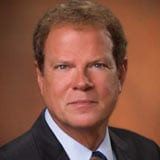Logically, one would presume that Presidential gridlock in Washington would be bad for the economy and, therefore, bad for the stock market. But history paints a different picture, explains Jim Stack, market historian, money manager, and editor of InvesTech Market Analyst.
With biennial national elections, whether they are Presidential or mid-term, there are three possible outcomes:
- A unified government with one party in control of both the White House and Congress;
- Presidential gridlock with one party in the White House and a different party in control of Congress;
- Congressional gridlock with a split Congress.
As Republicans prepare to take control of both the House and the Senate in 2015, Washington is moving from four years of Congressional gridlock to Presidential gridlock. And a look in the rearview mirror shows that Presidential gridlock is not necessarily something to be feared on Wall Street.
In fact, S&P 500 (SPX) post-election gains when the government is under Presidential gridlock have been much better than average and dramatically better than Congressional gridlock.
Of course, performance averages can be deceiving, so to delve deeper, we looked at every national election year since 1928 to find those elections that have resulted in either Presidential or Congressional gridlock. We then looked at the performance of the S&P 500 following Election Day for each year.
Here’s what you need to know about gridlock, and particularly, Presidential gridlock, where one party controls the White House and the other party controls both Houses of Congress:
- Gridlock is not uncommon in Washington, particularly over the last 68 years following WWII. Since 1945, the White House and Congress have been unified under a single party only 38% of the time; the remainder has been spent in gridlock.
Presidential gridlock, which is the case we face today with a Democratic President and a Republican Congress, has been by far the most prevalent type of gridlock, occurring 15 times since 1928. Congressional gridlock has occurred seven times.
- Historically, Presidential gridlock has not had an adverse effect on the stock market…quite the contrary. In fact, market performance appears to be much better than the overall post-election averages for all periods.
With Presidential gridlock, lengthy rallies significantly outnumber post-election losses. Out of 15 Presidential gridlock elections, there were only three negative returns each for the six, 12, and 24-month periods.
Conversely, strong gains have been far more prevalent with each of these time frames showing at least nine double-digit gains. The worst market performances during Presidential gridlock corresponded with bear markets after the 1956 and 1972 elections.
While the prospect of Presidential gridlock in the months ahead might be met with trepidation by investors, historical analysis shows that a change in the political impasse in Washington won’t necessarily have a negative impact on the market outlook.
It’s more likely that the opposite is true and, if history repeats itself, the current shift from Congressional to Presidential gridlock may even turn out to be a benefit in disguise.
Subscribe to InvesTech market Analyst here…
More from MoneyShow.com:



















